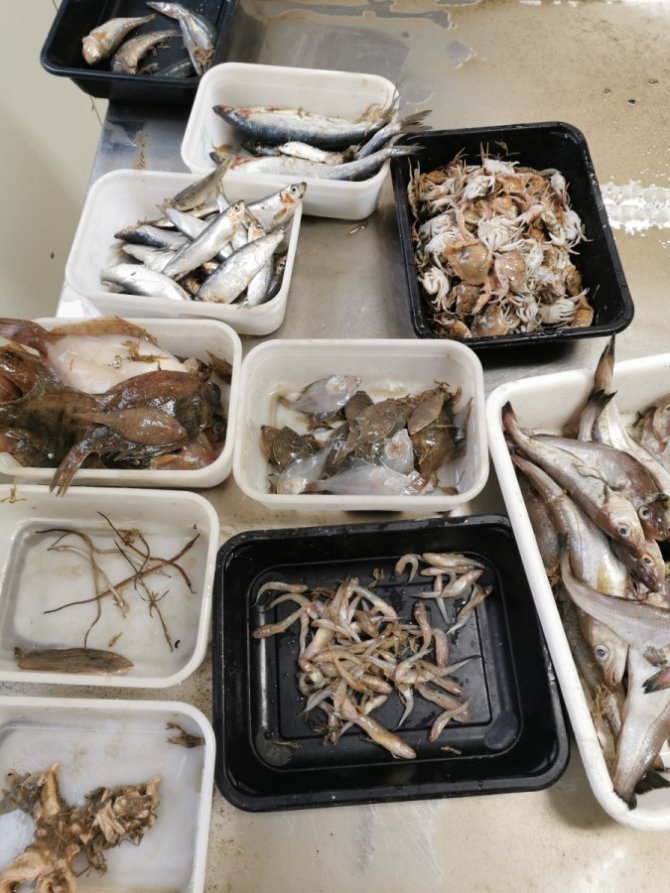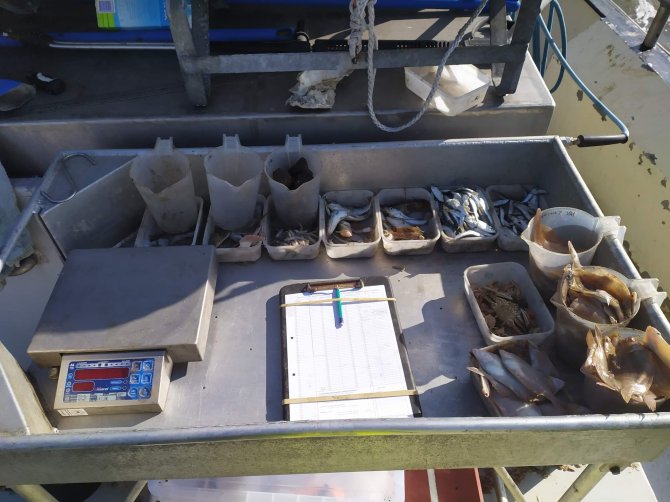
Impact story
Mapping bycatch in the shrimp fishery together with fishers
Although the target species of the Dutch shrimp fishery in the North Sea -the common shrimp or brown shrimp (Crangon crangon) - is not quota limited, some of its bycatch species do have a quota and are subject to the landing obligation (e.g. plaice, herring, sole, Atlantic cod, whiting, dab). Germany, supported by the Netherlands and Denmark, called for an exemption to the landing obligation for beam trawl fishers targeting shrimps in the North Sea, off the Belgian, Dutch and German coasts. This exemption has been made for a period of three years and has to be renewed in 2023.
Mapping bycatch
To meet the requirements of an excemption to the landing obligation, a sampling programme had to be established to quantify the bycatch of quota limited species. Following the EU regulation, the (discarded) bycatch percentage may not exceed 6%, and, as of 2023, 5% for the landing exemption to apply.
To this end, the Ministry of Agriculture, Nature and Food Quality (Dutch acronym LNV) has commissioned researchers from Wageningen Marine Research to map the bycatch from 2021 to 2023 by means of self-sampling to scientifically substantiate the exemption from the landing obligation for the Dutch shrimp fishery.

How do we obtain a representative view on the bycatch?
Currently, fourteen skippers have voluntarily joined the Dutch self-sampling programme to map species of both shrimps and bycatch throughout seasons and regions. The researchers hope to be able to increase the number of participating vessels. Various fishers have already expressed their interest in participating. The Dutch Fishermen’s Association (Nederlandse Vissersbond) helps to recruit fishers and compensates for participation.
The research plan stipulates that 100 sampling trips per year are made, spread across the participating vessels and fishing areas. That should yield 200 samples per year. At present, 30 sampling trips have been undertaken since the fall of 2021, with 60 samples taken.
The ten litre self-samples taken by the fishers are treated as representative of the composition of the entire catch. Right after the fishing trip, the samples are analysed: species are identified, weighed and some are measured in the Wageningen Marine Research laboratory.
Besides the samples, the fishers also record the haul information, the weight of total catch and landings for every haul of the trip. With this information we can calculate the bycatch for the entire fleet.
End of May 2022, the first results are presented to the ministry and scientists from Denmark and Germany.

Collaboration with Germany and Denmark
Denmark, Germany and the Netherlands have the largest shrimp fisheries in the North Sea. For the last two decades, the Netherlands has been the largest shrimp fishery in terms of landings. More than half of the 25-35.000 tonnes of shrimps landed annually are caught by the approximately 200 Dutch vessels.
Shrimp self-sampling programs have been also set up in Denmark and Germany in collaboration with the shrimp fishery. The three EU member states have aligned their research programmes and will jointly provide the bycatch information to apply for an exemption of the landing obligation.